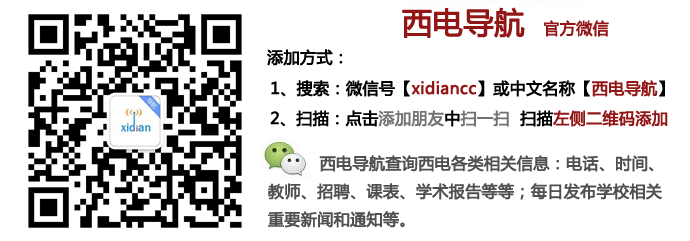Massive MIMO Explained,Systematic Antenna Design with Characteristic Modes
讲座名称:Seminar 1: Massive MIMO Explained
Seminar 2: Systematic Antenna Design with Characteristic Modes
讲座时间:2016-07-15, 9:00 am-11:30am
讲座地点:北校区阶梯教室J401
讲座人:Prof. Buon Kiong Lau (刘本健), Lund University, Sweden
讲座人介绍: Buon Kiong Lau received the Ph.D. degree from Curtin University of Technology, Perth, Australia, in 2003, in electrical engineering. Since 2004, he has been with the Department of Electrical and Information Technology, Lund University, where he is now a Professor. His primary research interests are in various aspects of multiple antenna systems, particularly the interplay between antennas, propagation channels, and signal processing.
Buon Kiong Lau received the Ph.D. degree from Curtin University of Technology, Perth, Australia, in 2003, in electrical engineering. Since 2004, he has been with the Department of Electrical and Information Technology, Lund University, where he is now a Professor. His primary research interests are in various aspects of multiple antenna systems, particularly the interplay between antennas, propagation channels, and signal processing.
Dr. Lau a Track Editor for the IEEE Transactions on Antennas and Propagation (TAP), for which he also served as an Associate Editor and a Senior Associate Editor. He was a Guest Editor of the 2012 IEEE TAP Special Issue on MIMO Technology and the Lead Guest Editor of the 2016 IEEE TAP Special Issue on Theory and Application of Characteristic Modes. He was the Lead Guest Editor of the 2013 Special Cluster on Terminal Antenna Systems for 4G and Beyond for the IEEE Antennas and Wireless Propagation Letters. From 2007 to 2010, he was a Co-Chair of Subworking Group 2.2 on “Compact Antenna Systems for Terminals” (CAST) within EU COST Action 2100. From 2011 to 2015, he has been a Swedish national delegate and the Chair of Subworking Group 1.1 on “Antenna System Aspects” within COST IC1004. He was the Regional Delegate of European Association on Antennas and Propagation (EurAAP) for Region 6 (Iceland, Norway, and Sweden) between 2012 and 2015. He is also a member of the Education Committee within the IEEE Antennas and Propagation Society (AP-S), where he served as the Coordinator for the IEEE AP-S Student Design Contest from 2013-2015. Dr. Lau received an award from the IEEE Transactions on Antennas and Propagation for exceptional performance as an Associate Editor during 2014-2015.
讲座内容:
Seminar 1: Massive MIMO Explained
Abstract: Massive MIMO is commonly accepted as a main candidate technology for 5G, due to its potential to provide unprecedented spectral efficiency, at minimal increase in complexity at user terminals. However, while the concept of massive MIMO had not been previously attempted, it is fundamentally a scaled up version of conventional multi-user MIMO.
In this seminar, I will give my interpretation of massive MIMO systems from the perspective of a MIMO fan, starting from the basics about MIMO. Being part of a larger pioneering effort to promote the development of the technology, I will also give an overview of massive MIMO activities at Lund University, including the development of LuMaMi (Lund Massive MIMO) testbed, the world’s first real-time testbed of its kind.
Finally, since my colleagues at Lund University have been active in recent debates surrounding of Orbital Angular Momentum (OAM), I will also present my perspective on the topic.
Seminar 2: Systematic Antenna Design with Characteristic Modes
Abstract: Conventionally, antenna engineering relies on customizing existing antenna structures to meet a set of requirements. Although advancements in computational electromagnetics and computational power over the past decade have help to shorten the design cycle, the heavy use of numerical optimization tools also tends to diminish the important roles of creativity, insights, and experience in synthesizing new antenna structures. In this context, the Theory of Characteristic Modes (TCM) perfectly interconnects modern computational electromagnetics with the creativity, insights, and experience of traditional antenna engineering. By extracting the inherent radiation properties of a structure, TCM allows for optimal antennas to be designed in a manner which is faster and superior to current complex antenna optimization algorithms.
TCM performs analysis on an arbitrary structure by solving a generalized eigenvalue equation derived from the Method of Moments (MoM) impedance matrix. This equation results in all the unique sets of currents (characteristic currents) and resonant characteristics (eigenvalues) of which the structure supports. These characteristic attributes can then be analyzed to design optimal antennas which meet a specific set of performance goals. These attributes allow new antenna researchers with little prior experience to follow a systematic, and intelligent design approach, rather than a relying on optimization algorithms or traditional brute force methods.
This seminar aims to illustrate how characteristic modes can be used as a systematic approach to design antennas to fulfill application specific requirements. TCM features in one or more EM software packages will be demonstrated. It is hoped that the seminar attendees will find the interest to explore the topic and discover for themselves how they can also take advantage of TCM in their own research.
主办单位:28365bet电信工程系
天线与微波技术国家重点实验室
国际交流与合作处
IEEE Xi'an Section, AP/MTT-Chapter

